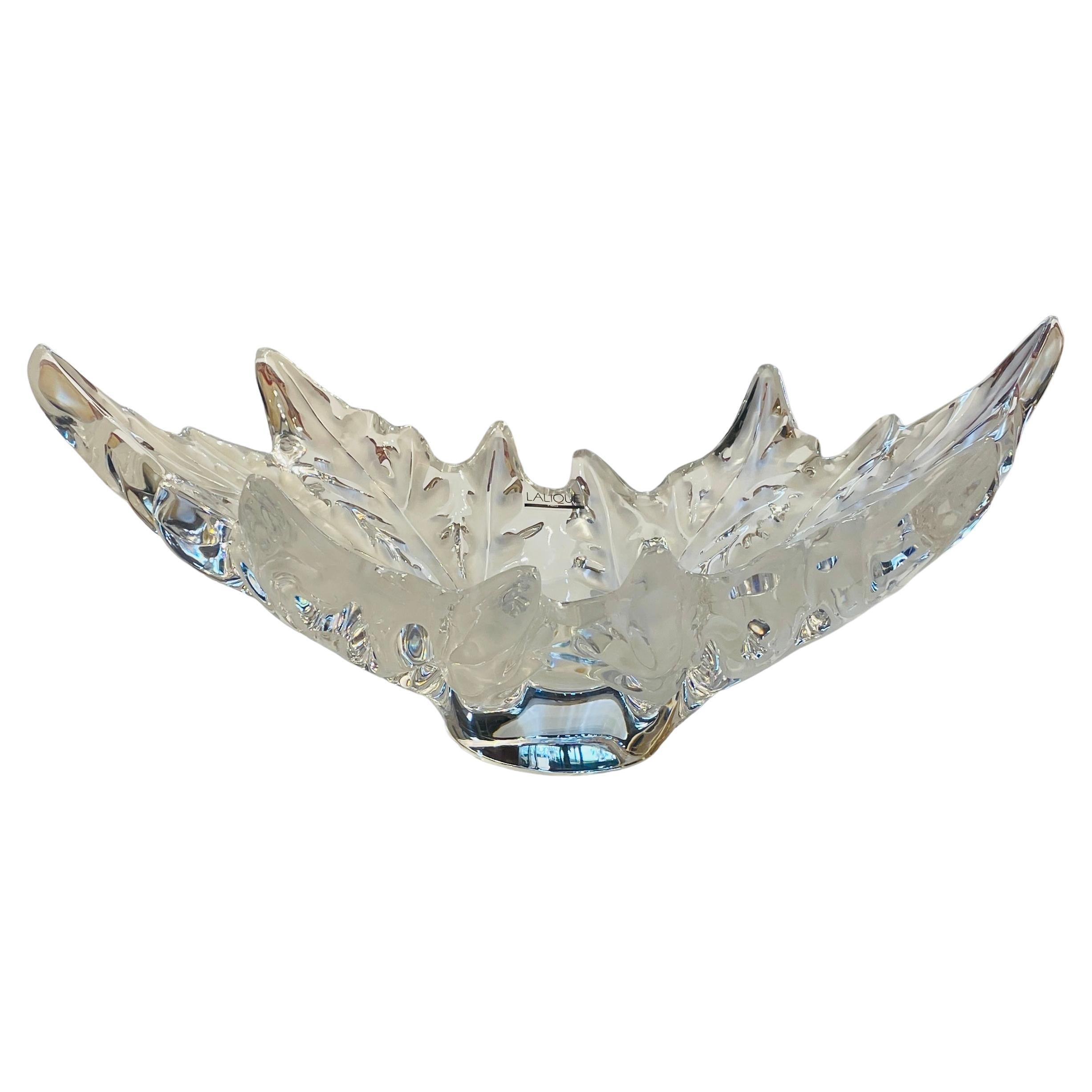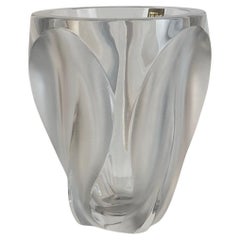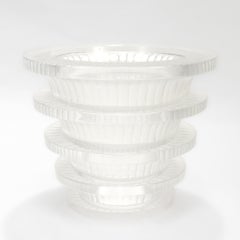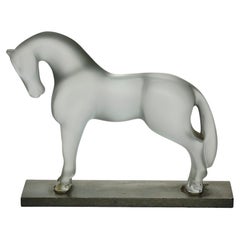Questions & Answers
Our trusted network of 1stDibs sellers answer common questions
Is Lalique always signed?
1 Answer

Yes, Lalique glass art and decorative objects are always signed. Prior to 1945, the brand mostly used the “R. Lalique” signature to mark its work. After World War II, Lalique began using “Lalique France" on its marks. Find a range of expertly vetted Lalique on 1stDibs.
1stDibs ExpertMarch 22, 2022
Related Questions
- What is Lalique known for?1 Answer
- Who owns Lalique?1 Answer
- What is Lalique made out of?1 Answer
- What is Lalique famous for?1 Answer
- What symbolizes Lalique?1 Answer
Shop for Marc Lalique Furniture on 1stDibs
“Flamme” Crystal Vase by Lalique Paris, Signed, 1970s – Sculptural Flower Vase
By Lalique, Marc Lalique
Located in Brescia, Brescia
Exceptional museum-grade Lalique crystal vase, Paris, 1970s. A monumental sculptural piece in thick, heavy crystal (approximately 7 kg), signed on the base and still retaining its or...
Category
Vintage 1970s French Mid-Century Modern Vases
Materials
Art Glass
Vintage Lalique Mid-Century Marc Lalique Era 'Chevreuse' French Art Glass Vase
By Marc Lalique, Lalique, René Lalique
Located in Philadelphia, PA
A fine signed French art glass vase.
By Lalique.
In the smooth edged variant of the Chevreuse pattern. (Model no. 1081). Designed by Rene Lalique in 1930.
The pattern is named a...
Category
Mid-20th Century French Art Deco Vases
Materials
Art Glass
20th Century Frosted Glass Sculpture entitled "Cheval Debout" by Marc Lalique
By Marc Lalique
Located in London, GB
"Cheval Debout" by Marc Lalique
A very fine frosted glass study of a standing horse in a striking position with its neck rounded exhibiting fine detail, the surface lightly polished...
Category
20th Century French Art Nouveau Animal Sculptures
Materials
Metal
Lalique, "Smile of the Angel" Champagne Glasses (16), France 1980
By Marc Lalique
Located in PARIS, FR
Superb service of sixteen champagne glasses "Smile of the Angel" also titled "Angel of Reims" designed by Marc Lalique for the Lalique Maison.
In very good condition. One glass with a small chip on the lip.
Dimensions in cm (H x D): 20.4 x 7
Secure shipping.
The Lalique Maison was created by René Lalique who was one of the greatest artists of his time, whether as a jeweler or master glassmaker. He marked the Art Nouveau and Art Deco periods with his unique style.
Lalique is recognized as one of the most important jewelry designers and glass maker of the French Art Nouveau period, creating innovative pieces for Samuel Bing's new store in Paris, Maison de l'Art Nouveau. He began exhibiting his work under his own name as early as 1894, notably at the Salon des artistes français, 1897 and 1898. The great glassmaker Émile Gallé discovered him at the first one and praised him highly. His stand at the 1900 Universal Exhibition in Paris was a great success.
While keeping sources of inspiration from the Art Nouveau woman, fauna and flora - including the peacock, various insects and sometimes a fantastic bestiary - he innovated by using materials barely used for jewelry at the time: glass, enamel, leather, horn, mother of pearl, often preferring semi-precious stones to precious stones. The introduction of volume in jewelry is facilitated by his knowledge in modeling. He designed his models, having them made by a team of chisellers, sculptors and enamellers that he carefully recruited.
Many women from the nobility, the bourgeoisie and the entertainment world began to wear his extraordinary jewelry, such as the Marquise Arconati-Visconti, the Countess of Béarn, Madame Waldeck-Rousseau, and Sarah Bernhardt, for whom he created a stage costume in 1902 for the revival of the play Théodora at the Sarah-Bernhardt Theater.
Lalique was the only modern artist whose client and friend Calouste Gulbenkian became. Gulbenkian acquired the famous Pectoral à la libellule (circa 1897-1898), a masterpiece much admired at the 1900 World's Fair, which he lent to the tragedienne Sarah Bernhardt.
After the end of the First World War, Lalique's colorful and fantastic jewelry were no longer in fashion. The creator sensed this and decided to convert to the Art Deco style through glassware in 1920. Thus, the neo-classical and geometric Art Deco replaces Art Nouveau. According to Olivier Mauny, former CEO of Lalique, his creations paved the way for an industrialization of art objects, because one of the best ways to include luxury and aesthetics in everyday life is to make everyday objects. He will create many objects such as vases, cups, candlesticks, perfume bottles, radiator caps for the Citroën 5CV (1925), decorations for the restaurant cars of the Côte d'Azur Pullman Express (1929), decorations for the dining room of the first class of the Normandie liner...
Category
Vintage 1980s French Art Deco Glass
Materials
Crystal
French Mid-Century Molded & Polished Crystal Vase, 'Ingrid' by Lalique, c. 1964
By Marc Lalique, Lalique
Located in New York, NY
An Elegant and Timeless French Midcentury Modern Molded, Satin / Frosted and Clear Crystal heavy glass vase, model "Ingrid" designed by Marc Lalique France, circa 1964. The work is b...
Category
Mid-20th Century French Mid-Century Modern Vases
Materials
Crystal
French Molded & Polished Crystal Champagne Cooler Ice Bucket, Ganymede, Lalique
By Marc Lalique, Lalique
Located in New York, NY
An Elegant and Timeless French Molded & Polished Crystal Champagne Cooler or Ice Bucket named 'Ganymede' by Marc Lalique circa 1960, France. The "Lalique," and "France" signatures a...
Category
Mid-20th Century French Mid-Century Modern Wine Coolers
Materials
Crystal


